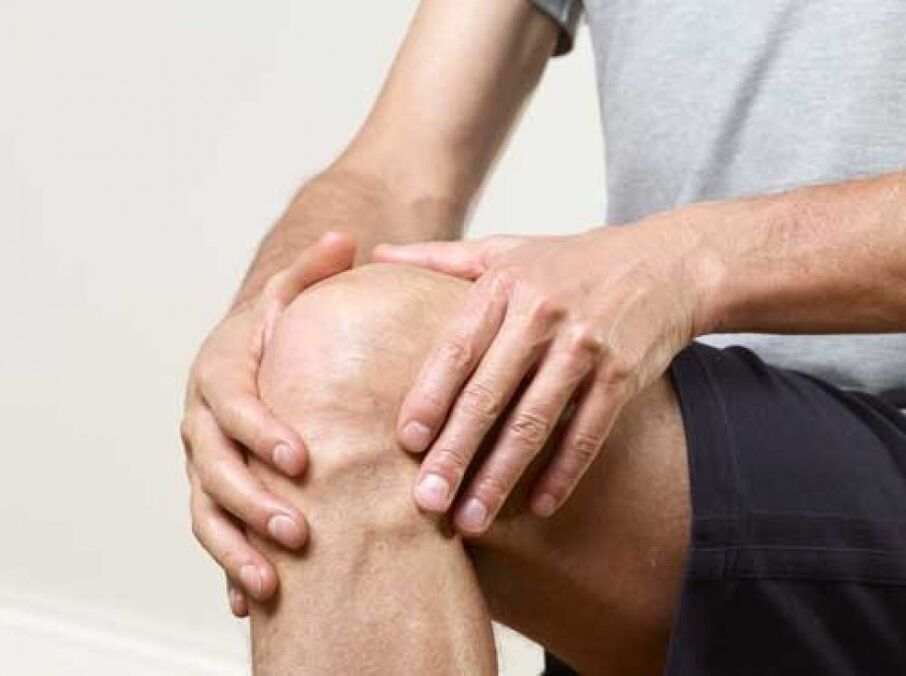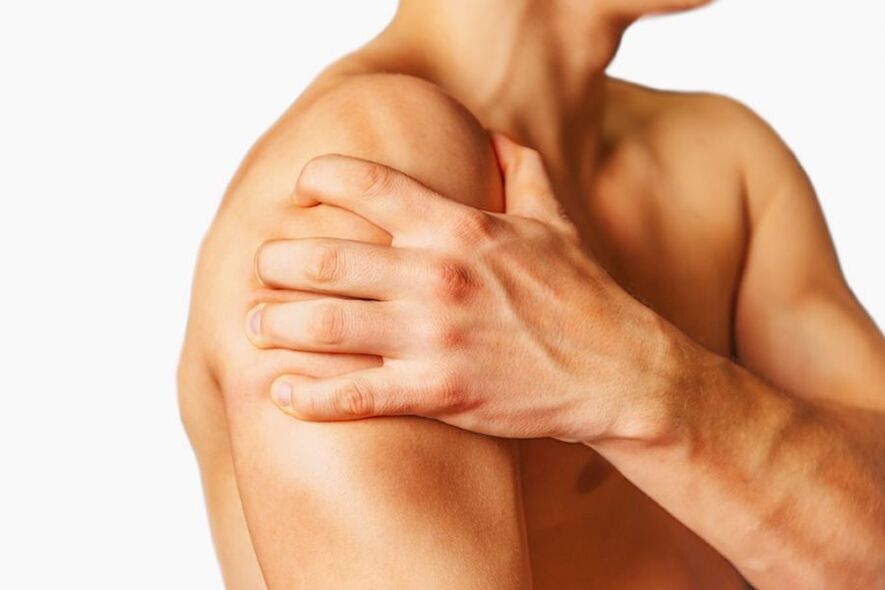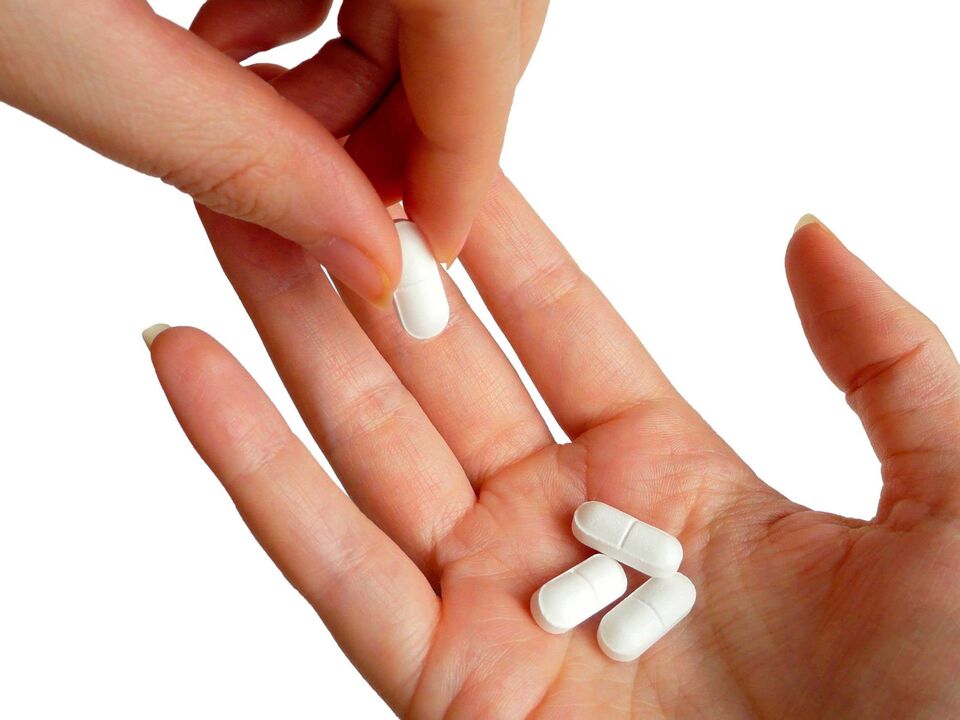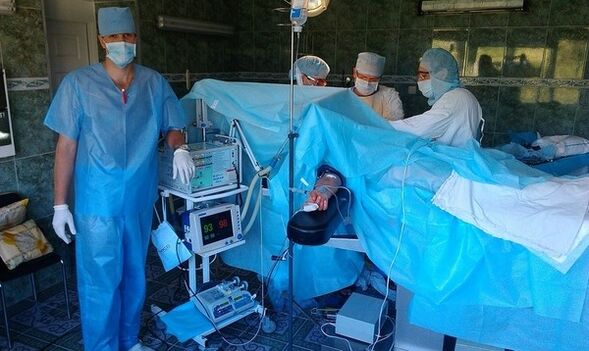
Arthrosis can affect any joint, while degenerative-dystrophic changes can be isolated or occur in several joints at the same time.
This pathology is not life -threatening, but it significantly reduces its quality. Severe pain, increased limits of movement over time, giving rise to disability.
In the early stages, conservative therapy is prescribed, which helps stop the progression of the disease.
It is difficult to completely cure osteoarthritis deformans (DOA), but it is possible to maintain bone joint function. In the final stage, only surgical treatment will help.
Development mechanism
Many people have heard of diseases like arthrosis, but not all of them understand what it is. To do this, you need to understand how the joints work.
The bone surface that forms the joint is covered with smooth, sliding, elastic cartilage that protects and shields it from damage. With arthrosis, the blood supply to this area is disrupted, and the hyaline cartilage begins to deteriorate. Furthermore, degenerative-dystrophic changes occur with the capsule, ligaments, periarticular muscles and other articulatory segments.
Usually the disease develops slowly, but the pathological process can accelerate under the influence of external factors. Much depends on the patient's body characteristics, comorbidities, lifestyle.
Osteoarthritis develops in this way:
- Blood circulation is affected in certain areas of the cartilage layer of the joints, then it begins to suffer from a lack of nutrients. Under the influence of traumatic factors, the area of destruction increases.
- The body replaces defects in the cartilage layer of the joints with mineral tissue, which has no obvious structure.
- Gradually, pathological growths (osteophytes) appear on the hyaline coating.
- Against the background of pathological processes, healthy areas of cartilage are prone to excessive stress. As a result, the work of the joint is disrupted and its surface is gradually destroyed.
Be careful!Arthrosis causes destruction of the joint bone surface, inflammation of the synovial membrane, compaction of the joint capsule. There is a narrowing of the joint space, the joint is deformed, destroyed, then the patient can become deformed. Therefore, it is very important to diagnose and start treating the pathology in time.
As a rule, arthrosis is detected in patients older than 60 years. However, the disease is also diagnosed at a young age - from 20 to 45 years.
References. Arthritis and arthrosis are similar, so many patients are interested in the question of how the first disease differs from the second. With DOA, only joints are damaged, and arthritis is characterized by inflammatory damage not only at the junction of bones, but also to internal organs (liver, kidneys, heart). This is the main difference between these pathologies.
Welding
People who are far from medicine, when they hear names like gonarthrosis, coxoarthrosis, osteoarthritis, do not understand the difference. The fact is that there are many types of this pathology, which differ in localization, specificity of course, cause, origin. Therefore, doctors have created several classifications of arthrosis to make it easier to differentiate it.

Types of arthrosis by localization:
- Gonarthrosis is a pathological process of the knee.
- Coxarthrosis is a lesion of the hip joint.
- Uncovertebral - a deformity of the cervical spine.
- Dystrophic changes in the shoulder joint.
- Interphalangeal - deformity of the interphalangeal joint of the bone.
- Spondyloarthrosis is a degenerative change in the joints of the spine.
- Ankle - Wear on the ankle joint.
- Polyosteoarthritis is a multiple lesion of the finger joint.
In addition, there are also jaw, temporal, cost-vertebral, clavicular-acromial arthrosis.
Depending on the characteristics of the course, the following types of pathology are distinguished:
- Deforming arthrosis is a disease that has progressed to stage 3. This is a progressive disease that requires immediate surgery.
- Arthrosis -arthritis - destruction of the cartilage layer, inflammation.
- Acute disease in which characteristic symptoms become more pronounced.
- Chronic arthrosis is the slow destruction, thinning of the cartilage layer with an erased course.
Depending on the reason, a distinction is made between:
- Dystrophic osteoarthritis - occurs as a result of metabolic disorders.
- Fracture arthrosis - develops as a result of a fracture.
- After trauma - the disease appears after a joint injury.
DOA varieties by origin:
- Primary (idiopathic) - occurs for no apparent reason, often due to age -related changes in the bone joints.
- Secondary - degenerative -dystrophic disorders trigger many factors (metabolic disorders, hormonal imbalances, trauma).
Doctors distinguish monoarthrosis and polyarthrosis. In the first case, 1 joint is affected, and in the second, all joints are destroyed at the same time. The latter type of disease is called generalized arthrosis, in which 3 or more bone joints are deformed.
Degree in pathology
According to symptoms and development, 4 stages of DOA are distinguished:
- 1 degree.The shape and structure of the joints have not yet changed, so the disease has a latent course. From time to time, patients feel mild discomfort in the affected area, especially after doing excessive physical exercise or sudden movements. The composition of the joint fluid changes, the blood supply to the joints is disrupted. The muscle fibers that surround the joint become weak.
- 2nd degree.Bone joints begin to collapse, bone growths form on its surface. Moderate painful sensations appear, inflammation occurs periodically. During movement, characteristic pulses are heard in the affected joint. Muscle function is reduced due to the fact that the trophism of nerve tissue is impaired.
- 3 degrees.There is a pronounced degenerative disorder of the hyaline cartilage and articulation, because of this, the axis of the limb is bent. Ligaments, muscles are shortened, and joints become pathologically mobile, but their movement is significantly limited. Patients often experience incomplete dislocations.
- 4 degrees.Bone connections are completely destroyed, complete immobility is observed, as well as severe pain syndrome even during rest.

Important. In the final stages of arthrosis, only endoprosthetics will help (replacement of the affected joint with a prosthesis).
Punca DOA
The question of why the disease occurs is quite relevant. Doctors distinguish between internal (certain diseases, bad habits, unhealthy diet) and external (injuries, characteristics of professional activities) causes of osteoarthritis.
Often secondary degenerative-dystrophic disorders develop against the background of inflammatory processes:
- Infectious diseases that trigger a variety of viruses and bacteria.
- Joint pain.
- Autoimmune diseases.
- Purulent inflammation of the joints.
- Gout (deposition of uric acid salts on the surface of bones).
- Psoriasis of the joints.
DOA can occur due to abnormalities in cartilage structure and nutrient deficiencies. Pathological changes are caused by the following factors:
- Genetic disorders.
- Pathology that appears during intrauterine development.
- Age -related changes in the body.
- Osteoporosis (increased bone fragility due to calcium deficiency).
- Hormonal imbalances.
- Disorders of metabolic processes.
- Lack of vitamins, minerals.
- Pathology accompanied by muscle weakness.
- Prolonged intoxication.
The severity of diseases of the musculoskeletal system also triggers degenerative changes in cartilage tissue.
External factors for the development of arthrosis include:
- Normal hypothermia.
- Dislocation.
- The effect of great power into the articulation area.
- Broken.
- Damage to the meniscus.
- Excessive physical activity is associated with professional sports or professional activities.
- Obesity.
- Surgery on joints or periarticular structures.
Regardless of the cause of DOA, it is important to identify the cause of the pathological changes first, and then treat the consequences.
References.Idiopathic arthrosis occurs on its own, for no apparent reason.
symptoms
Arthrosis is indicated by the following symptoms:
- pain syndrome;
- had mobility;
- crunch when moving;
- edema, changes in the axis of connection.
This is a characteristic symptom that occurs in all patients.

Early signs of pathology are discomfort in the affected area, which occurs after physical exertion. After the onset of discomfort, you should see a doctor, because the disease can be cured at an early stage.
Later, the patient complained of mild to moderate pain that appeared after loading the damaged joint and quickly disappeared.
A reduction in the mobility of the bone junction indicates a degenerative change in its structure. At first, the patient feels stiff, especially in the morning. Later, it becomes increasingly difficult for the patient to perform active movements. With further development, restriction of movement occurs even with additional assistance. If left untreated, joint contraction occurs, and over time, its motor activity is blocked.
Many patients complain of joint spasm during movement, which is accompanied by a painful sensation and decreased movement. As the disease progresses, these manifestations become more pronounced.
In the next stage, the axis of the limb is bent, and the articular membrane is deformed. This suggests that bone connections have practically collapsed, and healthy tissue has been replaced by osteophytes. At this stage, adjacent joints are subjected to strong pressure, so the likelihood of damage to their cartilage layer increases.
Establish a diagnosis
If you notice signs of osteoarthritis, seek immediate medical attention. The diagnosis of DOA is established after taking anamnesis, conducting laboratory and instrumental studies.
First, a visual examination is performed, where the doctor may see swelling in the affected area. Next, palpation is performed, which allows you to determine pain, nodules, temperature changes and skin moisture.
Comprehensive diagnostics involves laboratory research. Blood tests can reveal an inflammatory process, which is indicated by an increase in ESR (erythrocyte sedimentation rate), an increase in uric acid concentration. Urine tests are performed to determine protein levels.
Arthrosis was diagnosed using the following instrumental studies:
- X-rays help to see changes in the shape of the joints.
- Arthrography using contrast agents is a more accurate diagnostic method than x-rays.
- CT is used to assess joint structure.
- Radionuclide diagnostics are performed using radiopharmaceuticals. This study allows you to assess the anatomical state and function of the connection.
Magnetic resonance imaging is a highly informative modern diagnostic method. During the examination, you may see deformities of damaged joints, ruptures of the meniscus or ligaments.
To check for synovial fluid, the doctor prescribes a puncture to the affected limb.
After the diagnostic steps, the doctor creates a treatment regimen.
Healing methods
With arthrosis of any stage, medical attention is required. Complex therapy in the early stages helps stop pathological changes and restore joint function. If the patient seeks a doctor in the final stages of DOA, then the prognosis is poor.

With stage 1 arthrosis, drug treatment is carried out. Chondroprotectors are used to restore the structure of the cartilage layer. Patients are given the drug in the form of tablets and capsules. They should be taken in a course of 3-4 months twice a year. This drug contains structural elements of the cartilage layer.
Non-steroidal anti-inflammatory drugs (pills, injections) help relieve pain.
DOA treatment is carried out using physiotherapeutic methods:
- Magnetic therapy.
- Ultra high frequency therapy.
- Electrophoresis.
- Shock wave therapy.
- Paraffin therapy.
- Mud treatment.
Physiotherapy and physiotherapy exercises are performed after the pain is gone. The doctor devises a set of exercises that the patient must perform systematically. Exercise therapy improves muscle tone, strengthens ligaments, normalizes blood circulation, and helps restore articulation.
During and after treatment, it is recommended to provide rest, reducing the load on the diseased joints with the help of bandages, crutches, and crutches.
Sometimes patients are prescribed a sequence. After the procedure, the blood supply to the affected area improves, and the pain decreases.
During therapy, the patient must eat properly. You should leave out sugar, flour, fatty, spicy foods, potatoes, tomatoes, eggplant. And it is recommended to get rid of bad habits (alcohol, smoking) forever.
For arthrosis, intra-articular injections are used:
- Glucocorticosteroids help normalize blood supply to the affected area, stop the inflammatory process, and increase the elasticity of bone tissue.
- Synovial fluid analogs with chondroprotective properties. These drugs reduce pain, increase joint mobility, and accelerate the production of collagen and elastane.

In the last stage of DOA, surgical treatment methods are used:
- Endoprosthetics.
- Arthrodesis.
- Arthroscopy.
In further cases, the doctor replaces the destroyed compound with a metal prosthesis. Often, this method is used to treat large joints. After surgery, the patient's quality of life improved.
If arthrodesis is not possible, then the patient is prescribed arthrodesis. During surgery, the bone surface does not move with a special plate. Arthrodesis helps relieve severe pain, but does not restore joint motor activity.
During arthroscopy, a small camera and manipulator are inserted into the articulatory cavity, with the help of the bone growth removed and the cartilage structure restored. The video camera allows you to monitor all manipulations on the screen. As a rule, surgery is performed for gonoarthrosis, but the effect is short -lived.
DOA is dangerous, so it is important to identify and treat it in a timely manner.
Reviews
According to patients with arthrosis, it is easiest to cure the disease at an early stage. In further cases, only surgery will help. But in both cases, treatment should be comprehensive.
- First comment: "I was diagnosed with stage 2 knee arthrosis 1 year ago. I took special medication, underwent physiotherapy, went on a diet. At first, the pain disappeared, mobility was restored, but after 3-4 months the symptoms returned. Sometimes-sometimes the pain is accompanied by a rise in temperature. The doctor advised me to take capsules with hondoprotectors. With them my condition improved, for six months now I do not feel any pain. "
- Second review: "A few years ago I was diagnosed with grade 3 coxoarthrosis. I was in pain all the time, even at night, I couldn't move my legs normally. The doctor advised me to have surgery, but at first I refused and decided to tryintra-articular injections. However, after the procedure, my condition did not change much. As a result, I decided on a radical method. After endoprosthetics, he recovered for 1 year 3 months. During this period, he took medications, did special exercises, went tomassage, physiotherapy, following a diet. Now I live a fulfilling life. I advise everyone not to hesitate with treatment. "
- Third study: "I was diagnosed with rupture of the inner meniscus of the knee and grade 1 gonoarthrosis after MRI. The doctor prescribed chondroprotectors. I also used ointments twice a day. To protect the knee, I used an orthosis, I removed it only at home while resting. After a course of injectionsstarted electrophoresis, paraffin therapy, also bought a magnetotherapy device, had done 10 sessions. After another diagnosis, the doctor said that the joint had recovered by 70%. I continued treatment and hoped to fully recover my leg. "
As you can see, there are many different types of arthrosis. To avoid surgery and restore joint function, you should seek medical help at the first suspicious signs. Only a doctor will be able to determine the type, degree of complexity of the disease and devise a competent treatment regimen. DOA is easier to treat from the beginning.















































